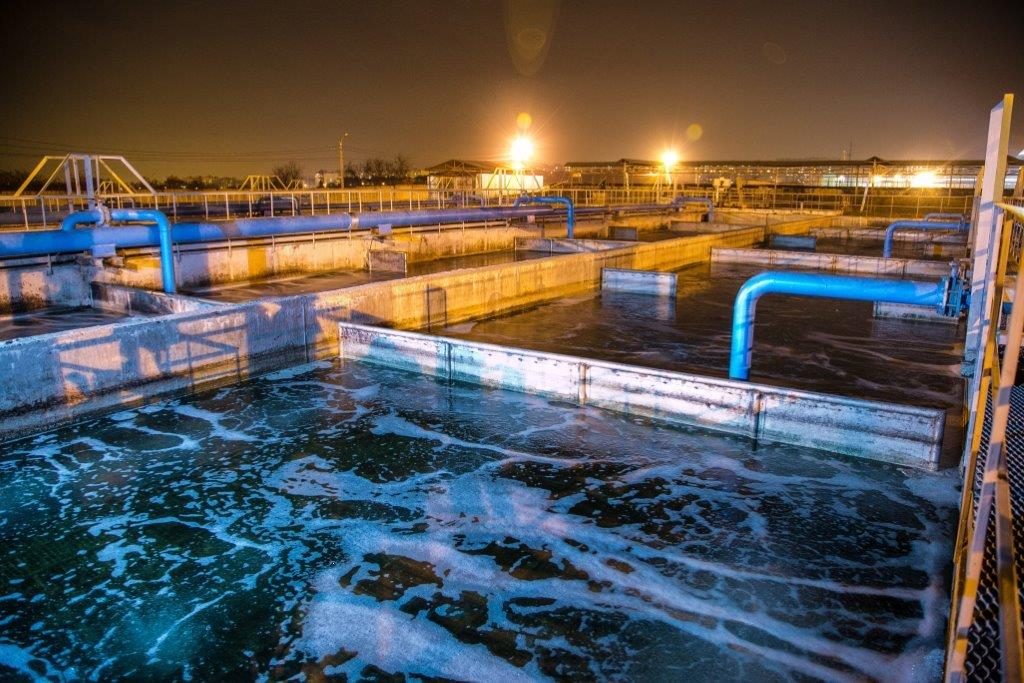Important Action In Local Waste Water Treatment Plants
Important Action In Local Waste Water Treatment Plants
Blog Article
Strategic Approaches to Improve Waste Water Therapy Efficiency and Lessen Ecological Influence
In the realm of waste water treatment, the mission for boosted efficiency and decreased ecological impact is a perpetual difficulty that requires tactical options. As culture grapples with the essential to take care of water resources sustainably, a nuanced strategy becomes important. The integration of advanced treatment modern technologies, energy-efficient processes, resource recovery techniques, enhanced nutrient removal techniques, and smart monitoring and control systems represents a multifaceted framework for addressing these pressing problems. Nonetheless, what lies at the core of this facility internet of approaches is the possible to change the way we come close to drainage treatment, not just as a process of disposal, yet as a beneficial possibility for advancement and ecological stewardship.
Advanced Treatment Technologies
Innovative membrane layer filtration systems have transformed sophisticated wastewater therapy procedures, substantially boosting the removal of pollutants. This modern technology has actually shown to be very effective in getting rid of a broad array of impurities, consisting of pharmaceuticals, hefty metals, and natural compounds, which are typically challenging to remove with conventional treatment techniques.
Additionally, membrane purification systems provide numerous benefits over standard treatment methods. Furthermore, these systems are extremely flexible and can be conveniently incorporated right into existing therapy plants or utilized as standalone systems for decentralized applications.
Energy-Efficient Procedures
The integration of energy-efficient procedures in wastewater treatment systems is essential for maximizing resource usage and lowering functional expenses. By applying energy-efficient technologies, therapy plants can significantly lower their carbon impact and total ecological impact. One vital strategy to improving power effectiveness in wastewater treatment is the usage of sophisticated oygenation systems, such as great bubble diffusers or surface area aerators, which can enhance oxygen transfer efficiency and lower power intake. Additionally, integrating energy recovery systems, like anaerobic digestion for biogas manufacturing or making use of excess heat for thermal processes, can aid offset energy needs and advertise sustainability.
In addition, maximizing procedure control and automation via the use of innovative sensors and checking systems can boost total power performance by adjusting procedures in real-time based upon real need and conditions. Executing energy audits and consistently keeping track of power performance signs are crucial practices to recognize areas for renovation and track energy-saving initiatives efficiently. Overall, the adoption of energy-efficient procedures in wastewater therapy not only benefits the environment however likewise adds to long-term expense savings and operational sustainability.
Source Recovery Methods
With an emphasis on maximizing source usage and sustainability in wastewater treatment systems, the implementation of source recuperation strategies becomes a crucial element in improving operational performance. Source healing methods in wastewater treatment include the identification and removal of useful resources from the waste stream, therefore transforming what was once considered waste right into a useful possession. By executing source recuperation methods such as nutrient removal and recovery, energy generation from raw material, and the manufacturing of multiple-use water, wastewater therapy plants can decrease ecological influence while making best use of performance.

Boosted Nutrient Elimination Strategies
Implementing sophisticated nutrient elimination strategies is important for enhancing the efficiency of wastewater therapy systems. Enhanced nutrient removal plays a critical duty in lessening the environmental impact of treated effluent released into water bodies. One of the key strategies used for boosted nutrient removal is the process of organic nutrient removal (BNR), which includes the removal of nitrogen and phosphorus via organic procedures. This can be accomplished through the usage of specialized bacteria that can convert nitrogen substances into inert nitrogen gas with denitrification, and build up phosphorus within their cells via a process called boosted biological phosphorus elimination (EBPR)

Along with BNR, advanced therapy approaches such as membrane layer bioreactors (MBRs) and created marshes can additionally be used to boost nutrient removal effectiveness. MBRs utilize membranes to accomplish high-grade effluent criteria by effectively getting rid of nutrients and put on hold solids. Built wetlands resemble all-natural wetland procedures to eliminate nutrients with plant uptake, microbial activity, and sedimentation. By incorporating these advanced nutrient elimination strategies into wastewater therapy communities, sectors and systems can successfully lower nutrient air pollution and safeguard the atmosphere.
Smart Tracking and Control Solution
Utilizing advanced innovation, the combination of wise surveillance and control systems transforms the operational efficiency of wastewater treatment centers. These systems include sophisticated sensing units and information analytics to continuously check crucial parameters such as pH view it degrees, turbidity, dissolved oxygen, and circulation rates in real-time. By accumulating and evaluating this information, operators can gain valuable insights into the performance of the treatment procedures, allowing proactive changes to maximize treatment performance.
Smart monitoring and control systems additionally support remote surveillance capacities, allowing drivers to gain access to real-time information and control functions from off-site places. This remote access improves operational flexibility and responsiveness, making it possible for swift interventions in situation of system malfunctions or variations in influent high quality. The anticipating maintenance capacities of these systems assist stop equipment failures and lessen downtime, eventually boosting the overall integrity of wastewater therapy procedures.
Verdict
In final thought, calculated strategies such as innovative therapy technologies, energy-efficient procedures, resource recovery strategies, enhanced nutrient removal methods, and smart tracking and control systems play an essential duty in enhancing wastewater treatment performance and decreasing ecological effect. By carrying out these techniques, wastewater therapy plants can enhance their overall efficiency, lower power intake, recoup important resources, and make sure compliance with ecological guidelines. These approaches are essential for sustainable and reliable wastewater administration techniques.

In final thought, strategic approaches such as advanced treatment modern technologies, energy-efficient procedures, resource recuperation strategies, boosted nutrient removal techniques, and wise monitoring and control systems play an important role in enhancing wastewater therapy effectiveness and lessening environmental influence.
Report this page